The maritime industry is home to some of the largest and most impressive vessels ever constructed. These ships play a crucial role in global trade, energy transport, and luxury travel. Below is an overview of the biggest ships across various categories, including tankers, cruise ships, container ships, dry bulk carriers, and general cargo vessels.
1. Oil Tankers
Seawise Giant
- Length: 458.46 meters
- Deadweight Tonnage (DWT): 564,763 tons
- Constructed: 1979
The Seawise Giant holds the title of the largest ship ever built. Originally designed as a supertanker, it was later modified to increase its size, making it a remarkable feat of engineering. The Seawise Giant, also known as the Knock Nevis, holds the title of the largest ship ever built. Launched in 1979, this supertanker measures an astounding 458.46 meters in length and boasts a deadweight tonnage (DWT) of 564,763 tons. Originally designed to transport crude oil, the Seawise Giant was later modified to increase its size further, making it a remarkable feat of engineering. Its massive hull could carry enough oil to supply a small country for several months. After a storied career that included serving as a floating storage and offloading unit during the Persian Gulf War, the ship was ultimately scrapped in 2010.
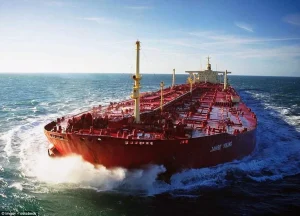
2. Cruise Ships
Wonder of the Seas
- Length: 362 meters
- Gross Tonnage (GT): 236,857 tons
- Constructed: 2022
Currently the largest cruise ship in the world, it offers luxurious amenities and can accommodate over 6,000 passengers. The Wonder of the Seas, launched in 2022 by Royal Caribbean International, is currently the largest cruise ship in the world. Measuring 362 meters in length and with a gross tonnage of 236,857 tons, it can accommodate over 6,000 passengers and nearly 2,300 crew members. This floating city offers an unparalleled array of amenities, including multiple swimming pools, theaters, restaurants, and even neighborhoods with parks and gardens. The ship’s innovative design emphasizes sustainability and efficiency while providing guests with luxurious experiences at sea.
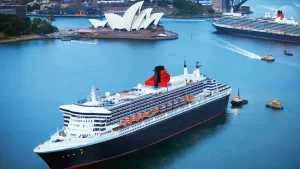
Queen Mary 2
- Length: 345.03 meters
- GT: 148,527 tons
- Constructed: 2003
This iconic ocean liner is renowned for its elegance and transatlantic crossings. The Queen Mary 2, launched in 2003 by Cunard Line, is an iconic ocean liner renowned for its elegance and transatlantic crossings. At 345.03 meters long and with a gross tonnage of 148,527 tons, it is one of the largest passenger ships ever built. The Queen Mary 2 offers a unique blend of modern luxury and classic ocean liner charm, featuring grand ballrooms, exquisite dining options, and a planetarium—an industry first at sea. This vessel continues to capture the hearts of travelers seeking both adventure and sophistication on their journeys across the Atlantic.
3. Container Ships
MSC Gülsün
- Length: 400 meters
- Capacity: 23,756 TEUs (Twenty-foot Equivalent Units)
- Constructed: 2019
The MSC Gülsün is one of the largest container ships in operation today, setting new standards for cargo capacity and efficiency in shipping.The MSC Gülsün, launched in 2019 by Mediterranean Shipping Company (MSC), is one of the largest container ships currently in operation. With a length of 400 meters and a capacity of 23,756 TEUs (Twenty-foot Equivalent Units), it sets new standards for cargo capacity and efficiency in shipping. The MSC Gülsün features advanced technology aimed at reducing fuel consumption and emissions while maximizing cargo space. This vessel represents a significant leap forward in container shipping logistics, allowing for more goods to be transported across oceans with fewer trips.
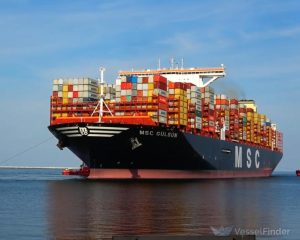
4. Dry Bulk Carriers
Vale Brasil
- Length: 362 meters
- DWT: 400,000 tons
- Constructed: 2011
As one of the largest bulk carriers globally, Vale Brasil is designed to transport iron ore and other bulk materials efficiently.The Vale Brasil, launched in 2011, is one of the largest dry bulk carriers globally. Measuring 362 meters in length with a deadweight tonnage of approximately 400,000 tons, this vessel is specifically designed to transport iron ore from Brazil’s mines to markets around the world efficiently. The Vale Brasil features state-of-the-art technology that enhances its operational efficiency while minimizing its environmental footprint. Its size allows it to carry vast quantities of raw materials in fewer trips than smaller vessels, making it an essential component of global supply chains.
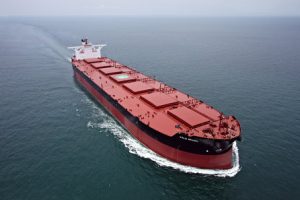
5. General Cargo Jumbo Ships
Pioneering Spirit
- Length: 382 meters
- DWT: 499,125 tons
- Constructed: 2015
This vessel is primarily used for offshore construction and decommissioning projects and holds the record for being the largest twin-hulled ship ever built. The Pioneering Spirit, launched in 2015 by Allseas Group S.A., is primarily used for offshore construction and decommissioning projects. At 382 meters long with a deadweight tonnage of approximately 499,125 tons, it holds the record for being the largest twin-hulled ship ever built. This remarkable vessel is engineered for heavy lifting operations at sea; it can lift entire oil platforms off their foundations for transportation or disposal. The Pioneering Spirit’s innovative design allows it to operate efficiently while minimizing its impact on marine environments.
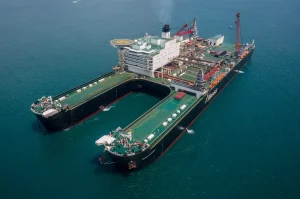
The sheer size and capacity of these vessels highlight significant advancements in maritime engineering and technology. Whether transporting oil across oceans or providing luxurious experiences at sea, these ships are essential to global commerce and travel. As demands for shipping continue to grow, we can expect further innovations that push the boundaries of size and efficiency in maritime transport.
By understanding these giants of the sea, stakeholders in the maritime industry can better appreciate their impact on global trade and the economy.

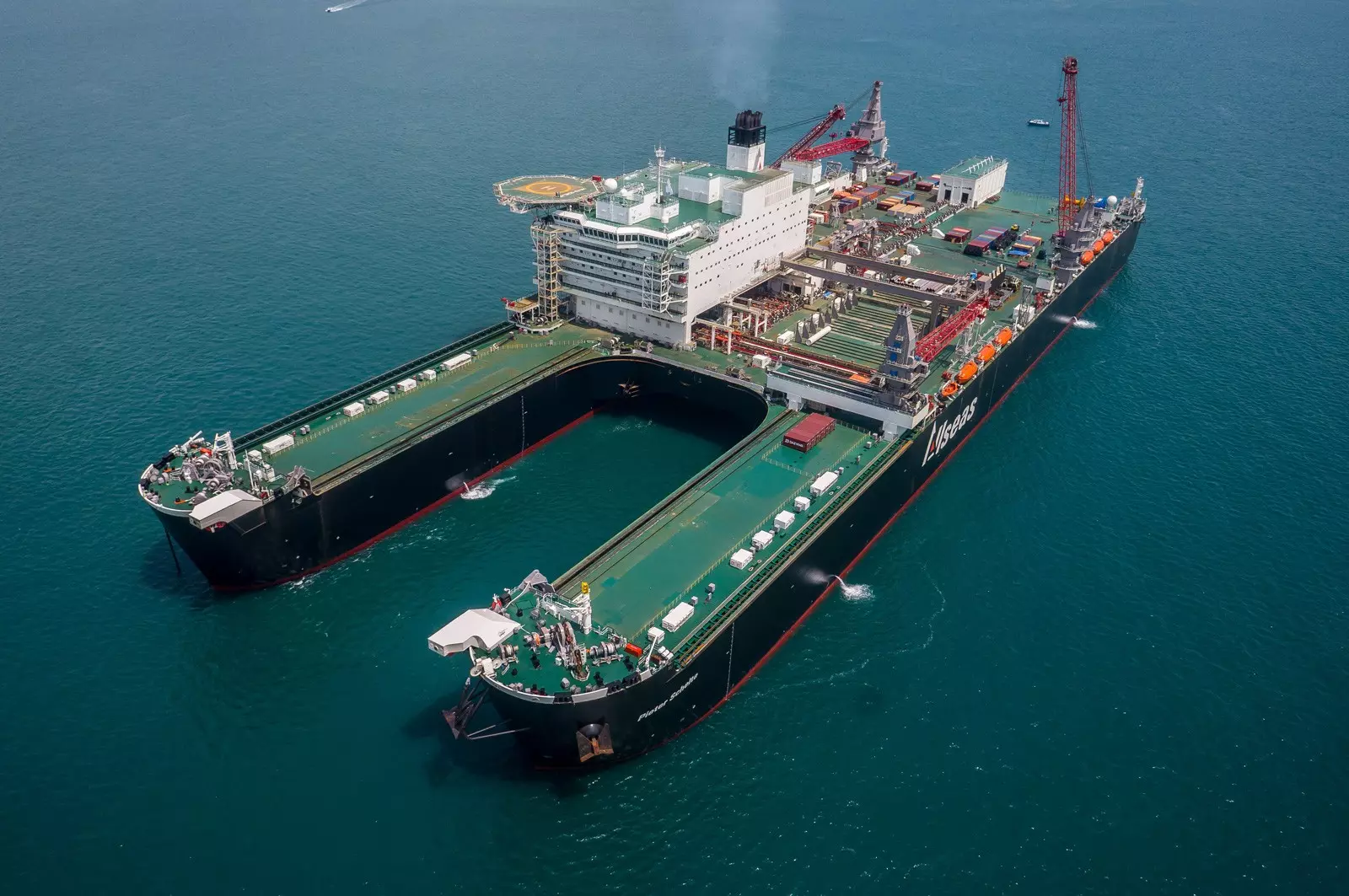
Normally I do not read article on blogs, however I would like to
say that this write-up very pressured me to take a look at and do it!
Your writing taste has been surprise me. Thank you, quite nice post. http://boyarka-inform.com/
Usually I do not learn article on blogs, but I would like to say that this write-up very pressured me to
check out and do so! Your writing taste has been amazed
me. Thanks, very nice article.
Usually I do not read article on blogs, but I would like to
say that this write-up very compelled me to check out and do so!
Your writing style has been amazed me. Thanks, quite great article.